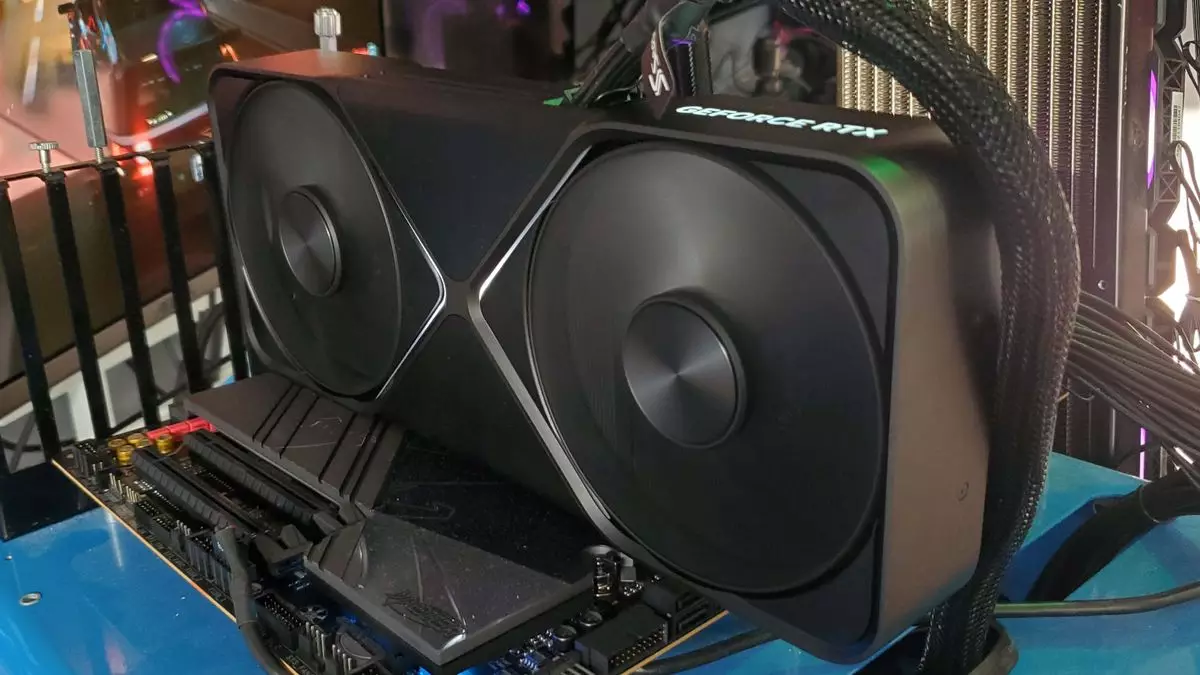As the latest generation of graphics cards hits the market, gamers and PC enthusiasts alike are clamoring for the most cutting-edge hardware. The RTX 5090 stands out with its impressive specifications, but using it safely and effectively demands a comprehensive understanding of power requirements and cable connections. In this guide, we will dive into the insights provided by Aris Mpitziopoulos, a well-respected figure in the realm of computer power supplies and the CEO of Cybenetics, to help ensure that your setup runs smoothly without the risk of overheating or component damage.
The Common Pitfall: Adapters and Extenders
When upgrading to a powerful graphics card like the RTX 5090, the allure of custom power cables and extenders can be enticing. However, Mpitziopoulos sounds a clear warning: “Do not buy adapters or extenders.” The potential hazards associated with these products can be significant. During peak performance, the RTX 5090 can draw as much as 48 amps, which raises concerns about the integrity of connections made through third-party cables or adapters.
The crux of the issue lies not merely in the connectors themselves but in the electricity they control. Power spikes and potential overheating can lead to disastrous outcomes if incompatible or poorly manufactured cables are used. The RTX 5090 connects via the 12VHPWR or the 12V-2×6 connector, which while designed for substantial current delivery, does not guarantee safety when using non-standard solutions.
The Importance of Using the Right Power Supply Unit (PSU)
Choosing a compatible PSU is crucial when setting up an RTX 5090. The importance of having a power supply that includes a native 12VHPWR socket cannot be overstated. While many modern PSUs are being built with this capability, others still rely on older designs using two 8-pin connectors to service their power needs. The risk of connecting a 12V-2×6 RTX 5090 to an older PSU designed for different specifications is not just a matter of efficiency—it could lead to catastrophic malfunctions.
Mpitziopoulos emphasizes that although the 12V-2×6 cables are rated to deliver up to 600 watts (or 55 amps), the risk of an adapter failing when subject to high tensions can lead to connection failure, overheating, or even melting. Caution must be a priority, especially when considering the currents that a graphics card like the RTX 5090 can demand.
A common misconception is that all cables labeled as compatible with the RTX 5090 will provide safe and effective power delivery. Mpitziopoulos clarifies that while Nvidia and authorized board partners ship adapters and extenders that may seem innocuous, it is the third-party products that pose real concerns. Compatibility with one specific model, like the RTX 4090, does not guarantee that the same setup will be safe for the RTX 5090.
The inherent design of high-performance graphics cards means that they elevate their electrical requirements significantly. For instance, while an RTX 4090 has a Total Graphics Power (TGP) of 450 watts, the RTX 5090 demands an astounding 575 watts, which represents a considerable increase in current draw. This elevation in power also requires careful attention to the quality of the connections.
Given these substantial power demands, the most prudent course of action for any user considering the RTX 5090 is to invest in a reliable power supply that meets or exceeds the card’s requirements. Mpitziopoulos himself has recommended obtaining a PSU with a dedicated 12VHPWR socket, as this offers the most straightforward and safe solution for power delivery.
Ultimately, the goal is to create a reliable, high-performance computing environment without compromising the safety of your components. As the market for gaming and graphics cards continues to grow, so too does the necessity for clear and accurate advice on how to navigate this increasingly complex landscape.
Final Takeaways
For those ready to splurge on the RTX 5090, understanding the implications of power supply logistics is essential. Heeding the warnings from industry professionals can save you from facing significant consequences. Stick to quality manufacturers for power components, avoid adapters, and make sure your PSU is capable of delivering the necessary power. By doing so, you can ensure that your investment in cutting-edge technology yields the performance advantages you expect without risking damage to your setup.

